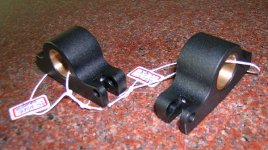bucfan1234
Well-known member
I would like to upgrade down the line with a cam cylinder head combo. I have read just baout all of the tech and stickies here, and I know by now that I cant afford the aluminum product for my ride.
I'd like a low end power cam, and I think the most I would want to rev would be 5000 or 5500. The car is not a daily driver, but still street, so it can be fairly aggressive. I have a C-4 (would consider a T-5, but keeping the C-4 for now)
So? Here are the two questions that I have for my budget.
What is the best late model large log cylinder head for me to be on the lookout for to use in this project? Year, vehicle, from a 200 or 250?
I also was planning to upgrade to 302 springs, adjustable 1.6 rockers and a cam.
Second question? What cam should be focused on for my goal. I'd like a good all round maybe something from 500 - 5000? Don't know new to this. I gather from the tech that with my auto I need to stay away from 109, but can I run 110?
Basically I need a plan, then a list, then to save up to make it happen on the cheap. Can you guys help me by clearing the muddy water of all the choices to narrow down to the best way for me to go?
Thanks in advance.
I'd like a low end power cam, and I think the most I would want to rev would be 5000 or 5500. The car is not a daily driver, but still street, so it can be fairly aggressive. I have a C-4 (would consider a T-5, but keeping the C-4 for now)
So? Here are the two questions that I have for my budget.
What is the best late model large log cylinder head for me to be on the lookout for to use in this project? Year, vehicle, from a 200 or 250?
I also was planning to upgrade to 302 springs, adjustable 1.6 rockers and a cam.
Second question? What cam should be focused on for my goal. I'd like a good all round maybe something from 500 - 5000? Don't know new to this. I gather from the tech that with my auto I need to stay away from 109, but can I run 110?
Basically I need a plan, then a list, then to save up to make it happen on the cheap. Can you guys help me by clearing the muddy water of all the choices to narrow down to the best way for me to go?
Thanks in advance.

